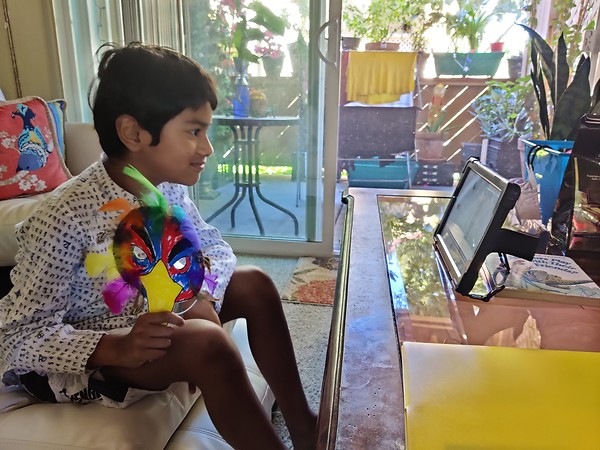The annual Marsh-In Summer Camp program held at the Don Edwards San Francisco Bay National Wildlife Refuge, Environmental Education Center in Alviso is staying online this year!
Join us for our second online summer camp program that combines technology and outdoor activities for a unique learning experience. Camp will be held from Monday, August 2 – Friday, August 6.
Online camp will consist of three live Zoom sessions as well as self-guided activities. Live Zoom sessions are Monday and Wednesday from 10:30 am - 11:30 am, and Friday from 10:30 am - 12:00 pm.

A participant at the online summer camp 2020.
Discover, engage and learn!
Although we cannot host our traditional summer camp program this year, we still want to provide our community with an engaging and interactive learning opportunity. This year’s theme is Endangered Bird Species. We will be highlighting two bird species found at two of our local National Wildlife Refuges. There will be live interactions with Refuge Rangers and Biologists as well as self-guided activities.
Requirements
Campers must be entering grades 1-6 in Fall 2021, have access to the internet via a computer or tablet, and attend all days of camp. All activity materials will be provided in a Camp Kit.
To apply
Please fill out this Google Form (one per family): https://forms.gle/rP3dXdngeAHZzKS56
Applications will be accepted through Wednesday, June 30th. Selections are made by lottery. Acceptance notifications will be sent on July 7th. Must return permission slips by July 14th. Log-on instructions will be sent on July 30th and camp begins on August 2nd.
Please email us at summercamp@sfbws.com or call 408-515-1889 with any questions.
Summer programming is sponsored by the San Francisco Bay Wildlife Society, a generous donation by Cargill, Inc., and the U.S. Fish and Wildlife Service.